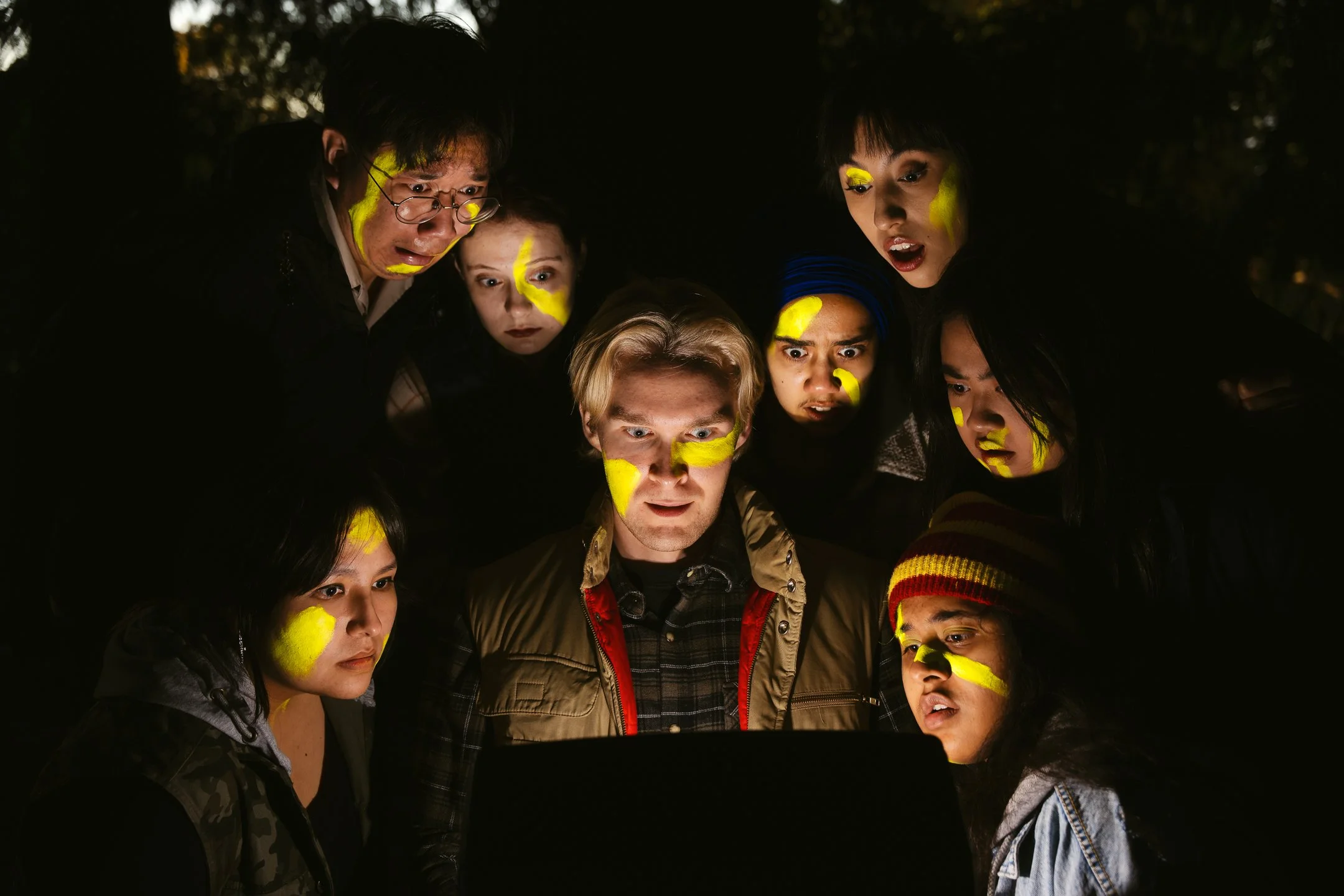Reconciliation & Transformation in Luke Parnell’s debut exhibition Indigenous History in Colour
/Luke Parnell in his film Remediation
Haida and Nisga’a carver and artist Luke Parnell explores oral histories, reconciliation, and conceptual art in his latest exhibition at the Bill Reid Gallery. In what marks his first exhibition at the Bill Reid Gallery, Parnell features 7 unique conceptual art pieces, including a still image from his film Remediation, an ethnographic response to Bill Reid’s 1959 documentary about an expedition to salvage historic totem poles from a deserted village on Haida Gwaii.
Indigenous Histories in Colour is an exhibition that explores themes centred around culture and history as well as research and the artistic process.
“I looked at the way the shows were curated and the way the shows were criticized. I used that as a jumping-off point. I was really interested in seeing how that would have changed. I looked at the exhibitions and looked at the work in all those shows. I appropriated some of the imagery from the exhibitions and appropriated the texts. All the text for those pieces is actually appropriated. I didn't write anything. It was more about analyzing it and seeing where it went,” says Parnell.
Parnell’s artwork continues to be in constant conversation with history, audiences, and the places where his work is featured. His film Remediation highlights this particularly well, where he explores the implications of removing totem poles by going on his own journey as a carver: “The Haida culture that created the totem poles wasn't the same as the contemporary Haida. It was all about authenticity. I really wanted a piece that would react to that and show that the Haida culture is vibrant and strong and will survive forever.”
Luke Parnell | Neon Reconciliation Explosion | 2020
Acrylic on birch plywood, pine, presswood
2.13 x 3.04m (7 x 12 feet)
Collection of Jennifer Thompson and Kurt Wipp
Photo by Toni Hafkenscheid. Courtesy MKG127.
Parnell elaborates that ultimately, totem poles are material, while culture is not. He demonstrated this by burning the top half of the totem pole he created: “Totem poles were never meant to last forever. They weren't meant to be in museums and to be shown. They were meant to go back to the earth, and the culture would then create a new one.” As invaluable cultural artifacts, totem poles are also symbols of historical, social, and artistic transformation.
While exploring what reconciliation meant to Indigenous communities and Canadians, Parnell created the interactive and largest piece in this exhibition, Neon Reconciliation. It features 44 panels painted by visitors of the Harvest Festival in Toronto, stapled together to create a large painting. The piece primarily captures what festival-goers thought reconciliation meant to them. After all, the art and the artist do not exist in a vacuum.
“I see [my artwork] as an extension of traditional West Coastal art; most pieces are storytelling. On the other hand, I don't create in a vacuum. Other people will see the work,” says Parnell.
Indigenous Histories in Colour is showing at the Bill Reid Gallery until May 9, 2021.







